In the Chinese province of Guizhou, the FAST radio telescope (Five hundred meters Aperture Spherical Telescope) was put into full operation, becoming the largest single-aperture astronomical instrument on the planet. The diameter of its reflector, built in a karst depression, reaches half a kilometer. Why do scientists need such large telescopes? What are the difficulties in creating them?
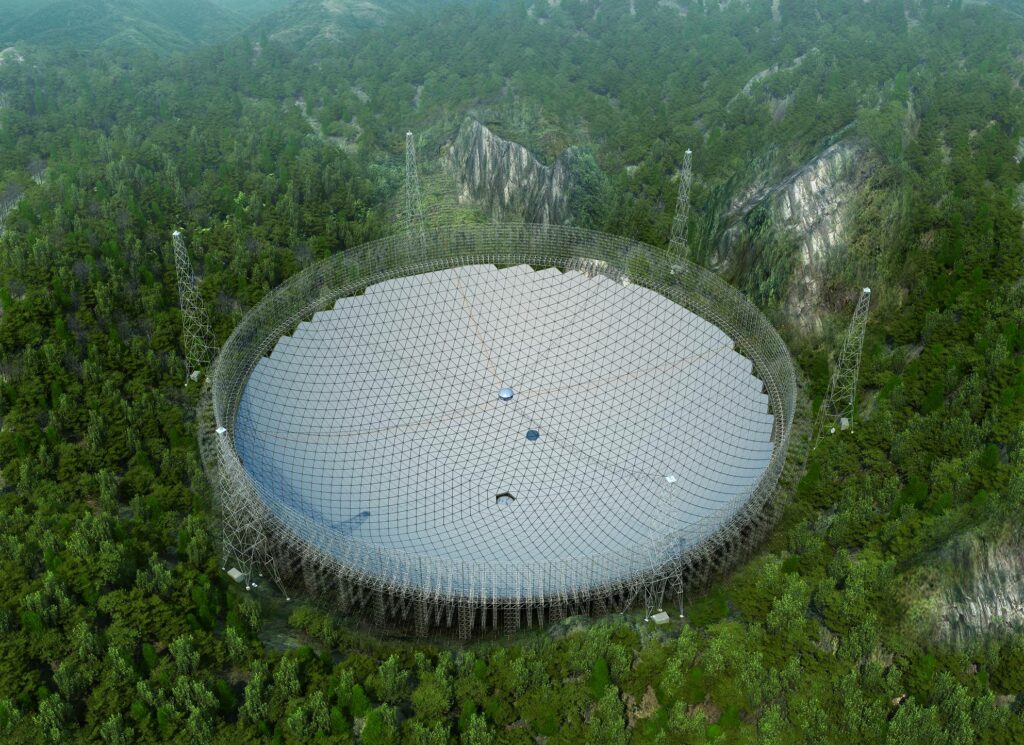
The first attempts to record radio signals from space were made shortly after the invention of the radio. In 1897, the British Oliver Lodge conducted the first experiments trying to register radio waves from the Sun, and a year later they were repeated by German astrophysicists Johannes Wilsing and Julius Scheiner — with the same negative result. Now we know that equipment of that age was just not sensitive enough. But then things seemed much more complicated. In 1902, the study of long-distance radio capabilities predicted the existence of the ionosphere, the upper layer of the Earth’s atmosphere that completely reflects radio waves. Scientists have begun to suspect that we will not be able to “hear” space in the radio range until we rise beyond this layer.
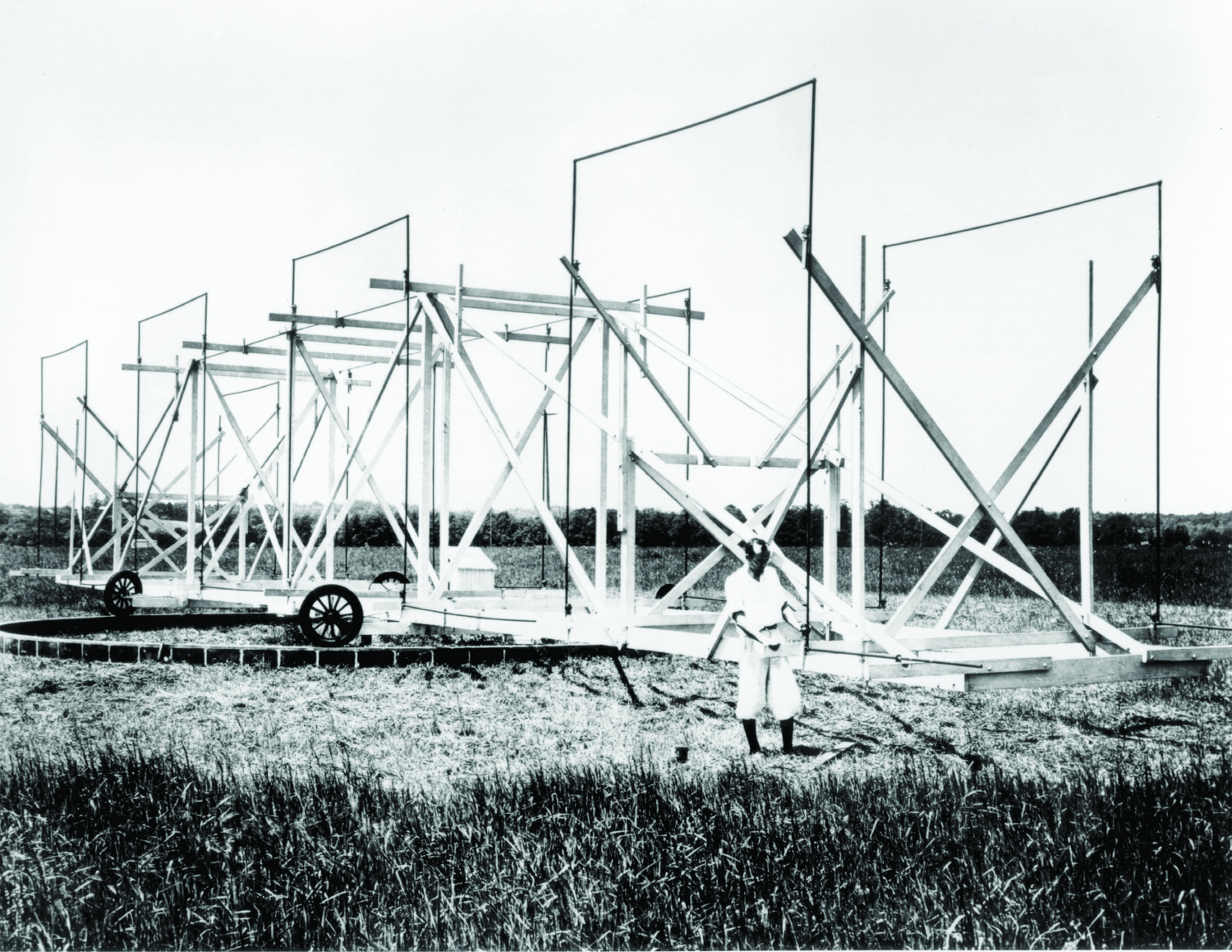
On the other hand, light rays, which are a variant of the same electromagnetic radiation as radio waves, overcome the ionosphere without hindrance, and the question was where the limit of its «opacity» is. While astronomers were searching for this limit, Karl Jansky, an American engineer at Bell Telephone Laboratories, was researching radio noise in the early 1930s. He noticed that in a certain frequency range, the interference periodically intensified, reaching a maximum at about the same time of day. More accurate measurements have shown that in fact the period of maximum noise intensity is 23 hours 56 minutes — that’s exactly the time of one revolution of our planet around its own axis relative to the stars. Consequently, the unknown “radio noise” comes from outside the solar system. As it turned out, this noise is the radiation that occurs when matter falls on a supermassive black hole in the center of our galaxy. It is now known as the Sagittarius A * radio source.
Why we need large antennas
The first radio telescopes had very low resolution. The most primitive of them only allowed us to know whether the source of the radio signal is above the horizon. But due to the rapid improvement of antenna designs and receiving equipment (largely caused by World War II, when the relevant developments were actively engaged in the interests of the military), this figure gradually increased, which meant more accurate positioning of the radio source in the sky and ability to “see” separately very close point sources. Moreover, radio astronomy has more opportunities for this than conventional optical astronomy.
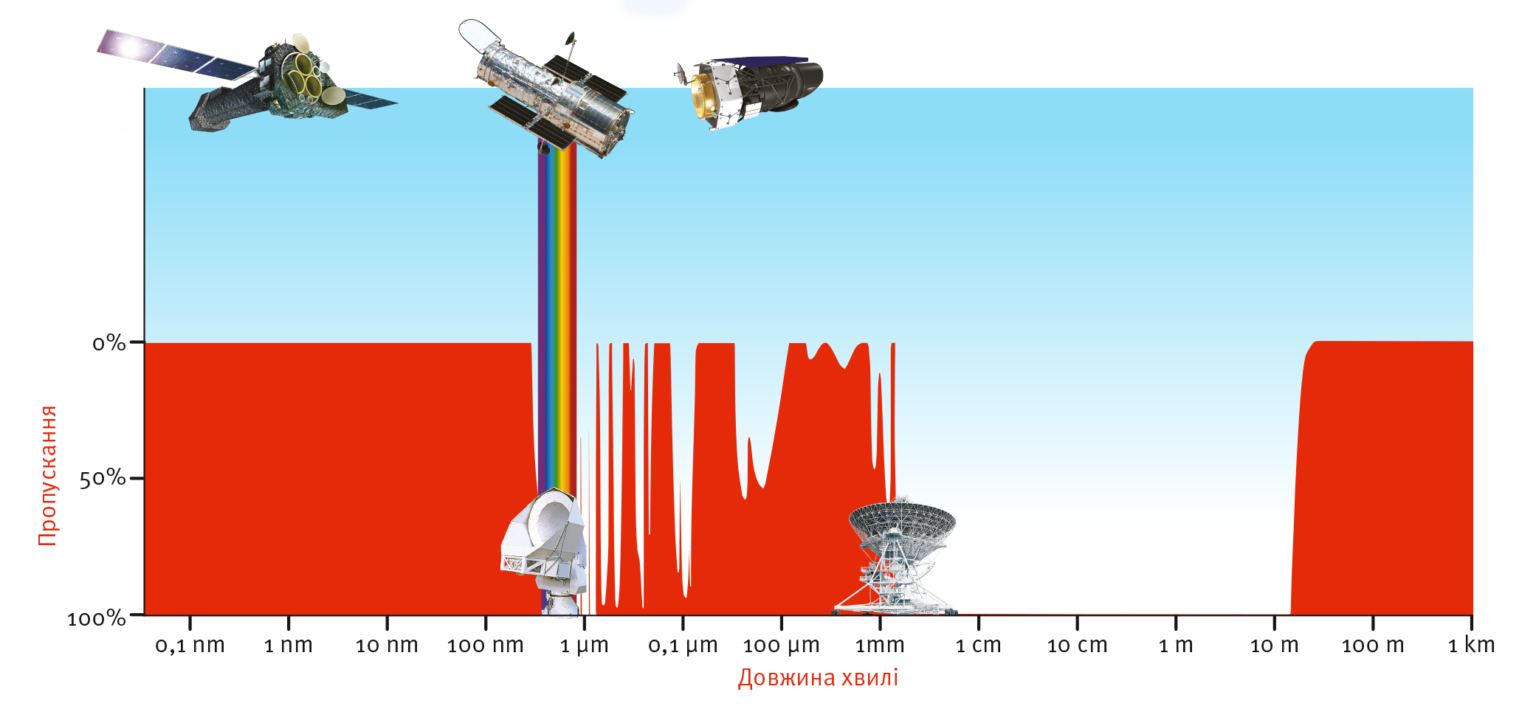
The operating principle of the telescope — regardless of the type of radiation with which it “works” — is to convert the flat front of the electromagnetic wave coming from a very distant source, into the spherical one and bring it to one point (focus), where the recorder is installed (and in the case of a visual telescope it is an eyepiece). The problem is that when the size of the telescopic lens is less than a certain critical value, it begins to introduce additional distortion to the wavefront, which negatively affects the image quality. This size is directly proportional to the wavelength. Therefore, the longer the wave of electromagnetic radiation being observed is, the larger the size of the lens or receiving antenna must be in order to obtain an acceptable resolution.
However, radio astronomy offers scientists another interesting opportunity: by computer processing of several carefully synchronized observations made by different instruments at the same wavelength, you can create a “virtual antenna” as big as the distance between the two most distant telescopes. Recently, this method allowed us to obtain an image of a shadow from a superheavy black hole in the center of the galaxy M87 in Virgo constellation. But usually astronomers get good images that require much less further processing, using “single” antennas of large size. In addition, the large area of the collecting surface allows you to get a stronger output signal and makes it easier to distinguish it among the noise.
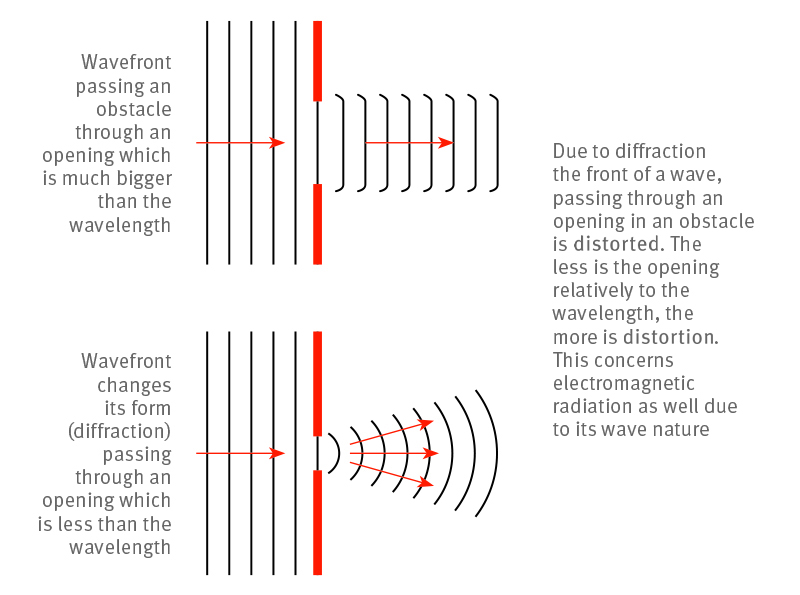
Another important feature of “single” radio telescopes is the opportunity to use them in “reverse” mode (as transmitters). This allows to conduct radar studies of the bodies of the solar system, as well as to send “radiograms” to hypothetical extraterrestrial civilizations. The first such message was made with the Arecibo Telescope in 1974.
The gravitational force of our planet limits the size of moving reflectors, which can be “rotated” in the direction of the object of observation and constantly keep it “in sight”: they cannot be more than a hundred meters in diameter. Larger structures will bend too much under their own weight. Therefore, until recently, the largest “single” radio astronomical instrument on the planet was the 305-meter Arecibo radio telescope on the island of Puerto Rico with a fixed main antenna built in a karst funnel. To be able to observe celestial bodies not only at the zenith, the receiver, suspended above the antenna “bowl” on three extensions, was made movable. Due to this, it was possible to cover the band in the celestial sphere with a width of 40 °. The telescope reached full capacity in 1963. In 2017, after two hurricanes, it began to have serious technical problems, and on December 1, 2020, it finally collapsed.
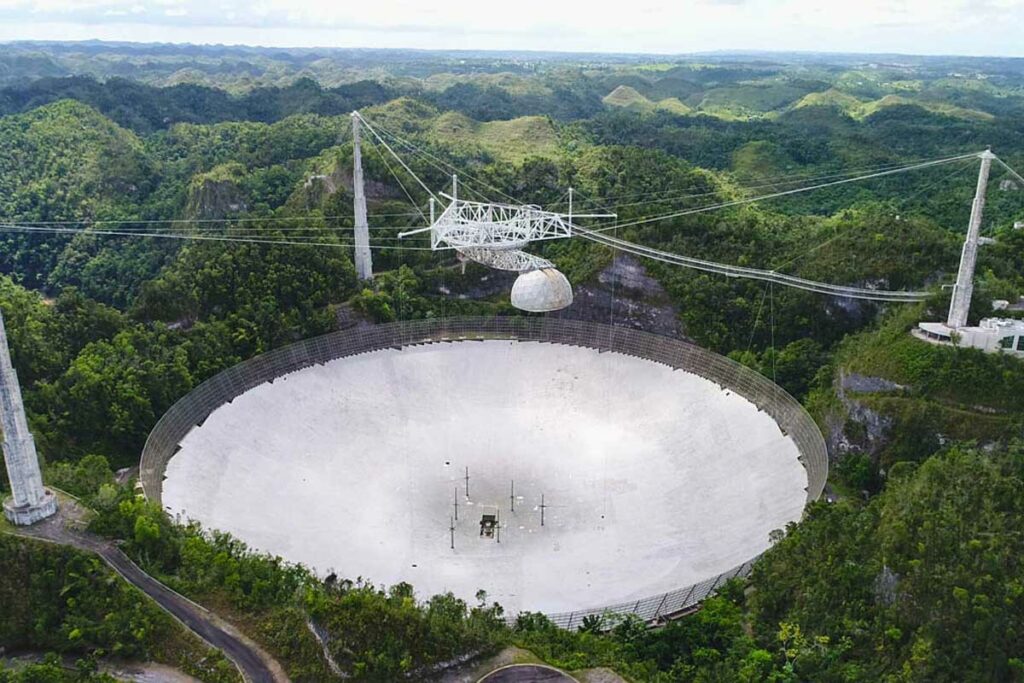
Since the beginning of this century, the People’s Republic of China has shown significant progress in technological and scientific achievements. Naturally, it concerns radio astronomy as well. The country began to participate more actively in international programs, as well as build its own powerful tools, one of which is FAST. Its construction began in 2011, and the first test observations were made in 2016. In January 2020, representatives of the Chinese Academy of Sciences, operating the new radio telescope, announced the completion of its preliminary tests and full commissioning. The huge antenna has already received the unofficial name “Tianyan”, which means “Heavenly Eye”.
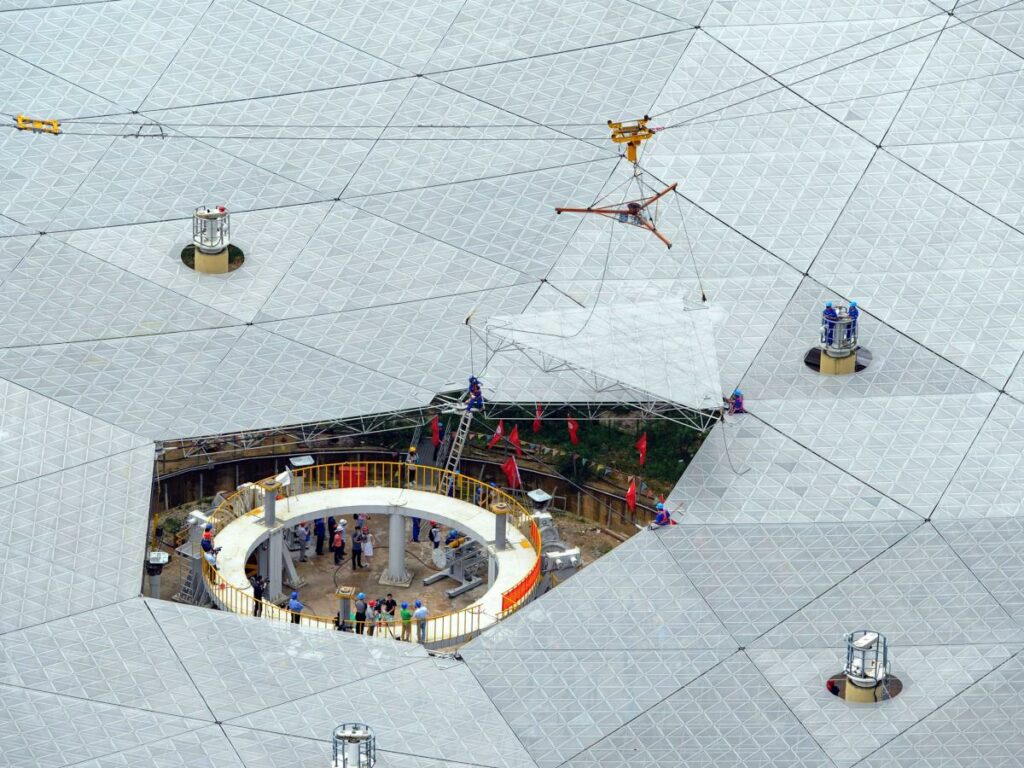
The main “mirror” of FAST is a segment of a sphere with a radius of 300 m. Its diameter at the edge is exactly 500 m, its surface is approximately equal to the area of 30 football fields. Like the Arecibo Telescope, it is embedded in a natural karst depression, but unlike its predecessor, whose reflector consisted of perforated duralumin plates rigidly connected to a solid base, the Chinese radio telescope is made of 4,450 triangular panels. Each has its own rotating mechanism, controlled by a central computer, which allows us better to “adapt” the antenna to the needs of specific observations. In addition, it allowed simplifying the design of the receiver and expanding the available band of high-quality reception to angular distances of more than 40 ° from the zenith. This is very important because the tool is situated almost at 26 ° north latitude. For Arecibo, this figure was 18 ° NL, but with its smaller “field of view” it covered almost the entire band of the celestial sphere near the ecliptic.
Even with the most favorable near-zenith position of the radio source, only a segment of the entire antenna area with a diameter of about 300 m will operate properly. FAST will conduct observations in the range from 10 cm radio waves (corresponding to 3 GHz) to 4.3 meters (70 MHz). This is slightly smaller than the range of the Arecibo Observatory, but it allows you to solve a large number of scientific problems. First of all, the Chinese radio telescope will be used to search for pulsars and study them — since 2016, it has already discovered more than a hundred of them as part of test observations.
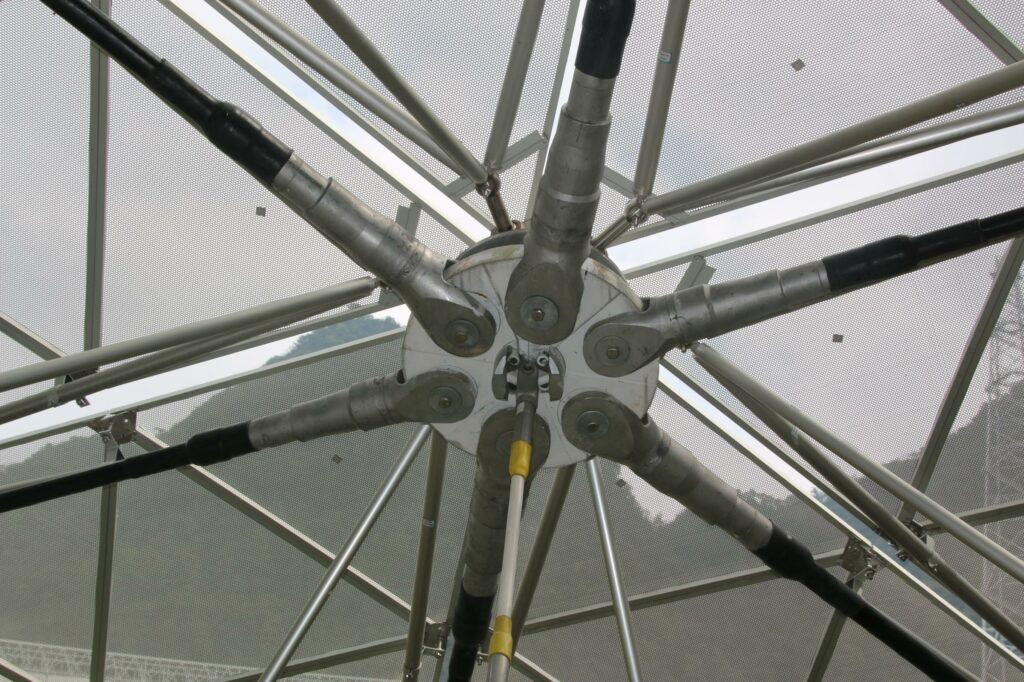
In the future, Chinese scientists plan to use the new telescope to draw up a detailed map of the distribution of neutral hydrogen in the universe and to register complex molecules in interstellar space by their characteristic spectral lines. Certain percentage of observation time will be given to specialists in the search for extraterrestrial civilizations — they will try to find “suspicious” signals and analyze if they might have artificial origin. Of course, the telescope is going to be involved in experiments to create “virtual antennas” VLBI (very-long-baseline interferometry), and also to radar planets, comets and asteroids.
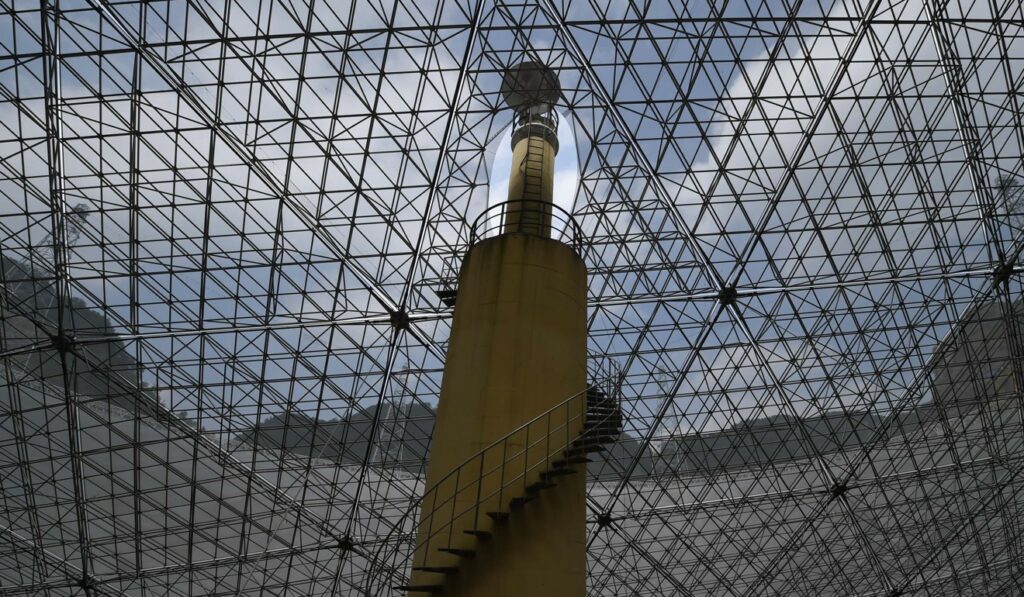
The designing and building FAST cost about $ 180 million (the initial budget was almost twice as small), and the Chinese government spent 1.5 times more on building infrastructure and relocating locals to ensure a “radio silence” in the vicinity of the radio telescope. So far, no other country has announced plans to build single antennas of the same or larger size: radio astronomers have now focused on testing synthetic aperture techniques, as well as improvement of electromagnetic radiation receivers. Another promising direction is to bring the receiving equipment out of the atmosphere and into high Earth orbits in general, which will allow to avoid obstacles created by terrestrial technology and to produce “virtual” antennas with a diameter of hundreds of thousands of kilometers.
